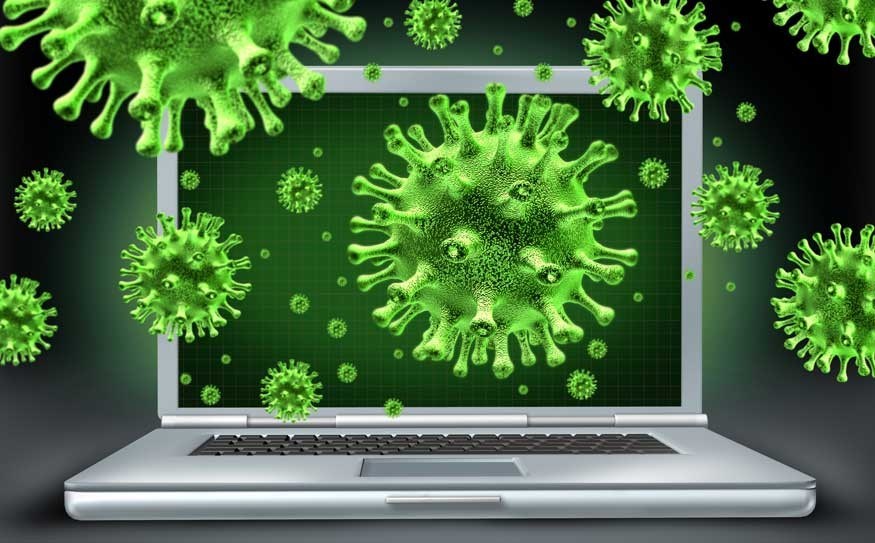Mac fans are a rabid breed at times, defensive and devoted, and positively prickly when someone points out something is less than perfect about Apple's hardware or software. I use an Apple almost every day as well as a Windows 7 (now Windows 8) laptop, so I feel pretty confident when I say that both systems have their good points and bad points — and that the happiest computer users out there are the ones that chose not to make the choice and dual boot their machines.
The one ace that every Apple user has up their sleeves in a flame war is the lack of viruses out there (using "virus" as a catchall term to describe hacks, worms, trojans, botnets, spyware, malware and other malicious code) for Mac OS. Only a few years ago PCs were under siege with literally tens of thousands of security risks circulating via the web, ranging from relatively harmless spybots used to farm personal details to more serious threats that were capable of destroying your data or keyloggers capable of stealing your personal information.
Meanwhile, Apple computers were clean. Most people didn't even bother to install any security software while PC users would often have several processor and memory-draining programs running at all times — and still get infected!
It got to the point where Apple used to brag about security in its "I'm a Mac/I'm a PC" commercials, something I always felt was a bit like throwing rocks at a hornets nest. There isn't anything inherently safer about Apple computers, but since it was based on the Unix platform the operating system doesn't run the same code and executable files as all those Windows-based viruses going around. Also, Macs only represented a small sliver of the global market, usually between three and seven per cent of the total base, and the jerks making viruses left the platform alone.
As well, the vast majority of PC viruses were not unique, but were actually cloned from other PC viruses — essentially cutting and pasting the malicious code, and then changing it slightly to stay ahead of the security software. The number of unique viruses is actually quite small.
If last week's Flashback virus is any indication, however, Apple is not infallible.
Apple has acknowledged that at least 600,000 Macs were infected by the virus, known as Flashback and Flashflake, after users were prompted to update their versions of Adobe Flash.
It wasn't the first time Macs were compromised by a virus but it's the biggest outbreak to date for Mac OS machines — and rare enough to draw attention.
Apple is pledging to fix the problem and prevent similar things from happening in the future and fair enough — Microsoft used to update almost weekly to patch security holes — but it probably won't end with this. The real question is whether this Mac virus an anomaly or the start of something bad.
"Those using Mac OS have, perhaps, been lulled into a false sense of security," wrote computing professor Alan Woodward. "Mac OS users may be 'safer' than Windows users, simply because they have fewer attacks focused on their systems, but they are not more 'secure.'"
Many security companies already do make security software for Macs — Kapersky Labs, Norton, avast!, McAfee, Panda, Zebra, Tracker, among others — that might be necessary if more viruses follow Flashback.
It's also a good idea to continually check for system updates. Go to System Preferences and click on Software Update every few days to see if any updates for your operating system are available. It's also good to keep your web browsers and mail clients up to date as they will patch security issues on a regular basis.
Another good way to avoid viruses is to never, ever click on anything that you've been prompted to click on. Most viruses do need your approval before they can be downloaded and installed on your system, and will often pose as something else — a program, a media file, etc. So the next time you're prompted to upgrade Flash, to use the Flashback example, quit that webpage and go to Adobe.com to download it manually from the source.
That's good advice for PC users as well.
Meanwhile, Microsoft does seem to have its act together when it comes to battling viruses. On XP, Vista and Windows 7, all you really need to be secure is Windows Security Essentials and maybe Malwarebytes (www.malwarebytes.org) to remove malicious programs.
The Windows 8 Consumer Preview I'm currently using is even better, rolling Windows Security Essentials into always-on Windows Defender. It runs in the background and updates itself. When you download anything it scans it, but otherwise you won't know that it's there. Still, I do recommend Malwarebytes and occasionally doing a full scan of your computer.
If you do get a virus and can't get rid of it easily, you can restart your computer in "Safe Mode" (hold F8 while its booting) and try running Malwarebytes. If that doesn't work, the next best option is to do a system restore, essentially turning back the clock to the time before you downloaded the virus. You may lose some data like browser history and any new programs you installed, but it generally takes care of the problem.




